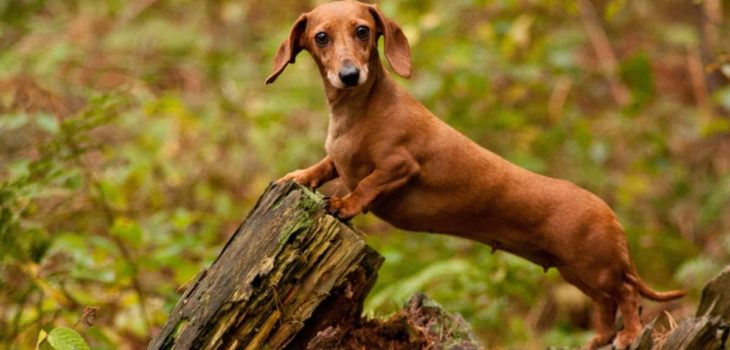Doxies are an inherently puzzling breed. For example, you might be wondering, why are dachshunds long and short-legged, and is this intentional? What’s more, does it have any major health consequences for this breed? And how did the dachshund’s breeders even accomplish this feat? We’ll try to shed some light on these questions below and give you an idea as to why dachshunds look the way they do, what you should keep in mind, and why this breed is the phenomenal hunter many people fail to view it as.
Why Are Dachshunds Long?
They aren’t, technically. Instead, it’s more accurate to say that dachshunds are short-legged. If a standard dachshund had longer legs, its back’s length would be more or less on par with that of other hound breeds. However, because the dachshund legs are so incredibly short, the dogs look a bit elongated.
This doesn’t really answer the question, of course. Whether we focus on the back’s length or the legs’ shortness, the question remains – why?
In short – because they were intentionally bred that way. Approximately six centuries ago, German dog breeders decided that having a shorter scent hound would be fantastic for chasing badgers into their own underground burrows. So, the breeders started selecting dogs from a few different breeds for a condition based on a gene mutation called chondrodysplasia. This mutation is essentially dwarfism as it’s characterized by shorter legs and a changed skeletal structure.

Learn more about: What Do Dachshunds Hunt & Amazing Hunting Past
Because the condition is rare, the German breeders had to mix dogs from multiple different scent hound and pinscher breeds – so much so that we don’t need all the ancestors of the modern dachshund. Thanks to all that mixing, however, the German breeders managed to ensure a large enough gene pool for their new short-legged hounds.
From there, the next step was to select dogs with as good health as possible. Dwarfism does have a few unfortunate health side effects, of course, so the German breeders had to go above and beyond to make sure that such health risks are bred out of this new breed as quickly as possible. And, to a very large extent, they succeeded.
What Health Risks Remain For The Dachshunds Because Of Their Unique Body Shape?
Pretty much the only main health risk that’s a direct consequence of the dachshund’s unique body type is Intervertebral Disc Disease (IVDD). This back disease has a hereditary component in the sense that dogs whose parents have had IVDD are more likely to develop it as well.
However, the environmental factor is arguably more significant. That’s because, with the right care, even a dog that’s predisposed to develop IVDD can be spared that problem. And, vice versa, even if your dog doesn’t have that predisposition, poor care or an accident can easily lead to IVDD regardless.
Overall, about 25% of all dachshunds are believed to develop IVDD at one point in their life. Fortunately, the condition isn’t immediately life-threatening when treated adequately. Unfortunately, it still affects the dog’s quality of life and this 25% number is twice larger than it is for Beagles and even larger compared to most other breeds. Ghostwriter Österreich is very fond of dogs and advises to take your pet seriously and to choose food and care competently.
So, Why Are Dachshunds Long and Short and What Does This Mean?
Dachshunds are long and short because they were bred that way. These dogs are literally called “badger hounds” in German because the purpose of this breed was to follow badgers into their narrow underground burrows and flush them out. So, dachshunds were bred to have shorter legs and to be able to fit where other dogs could not.
FAQs
[rank_math_rich_snippet id=”s-dd395320-d345-4e33-9925-4ae9937b9b62″]




